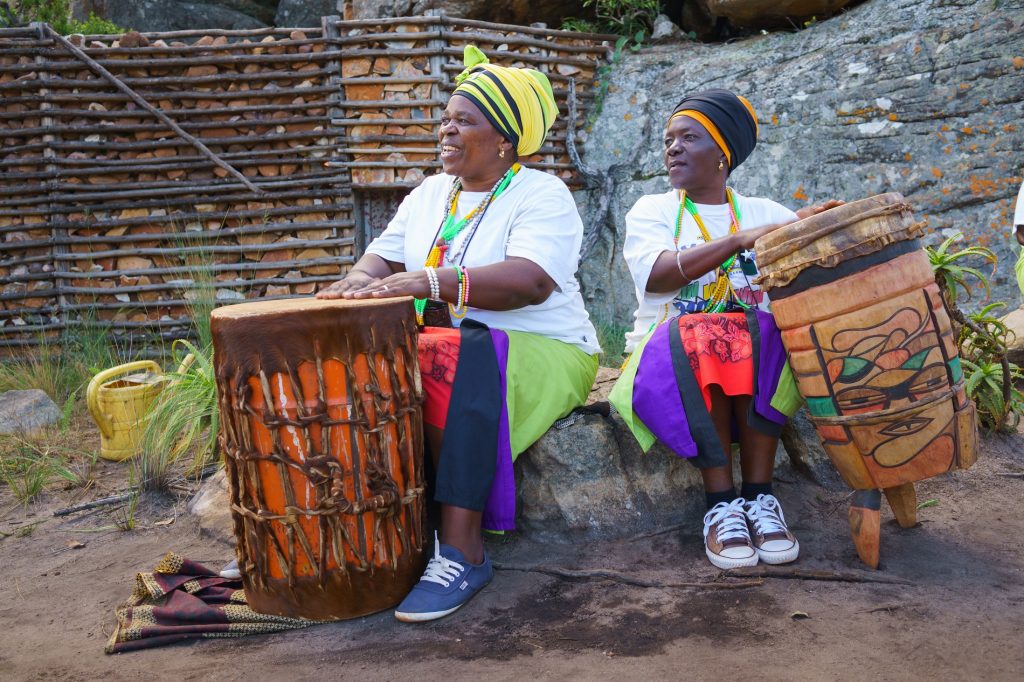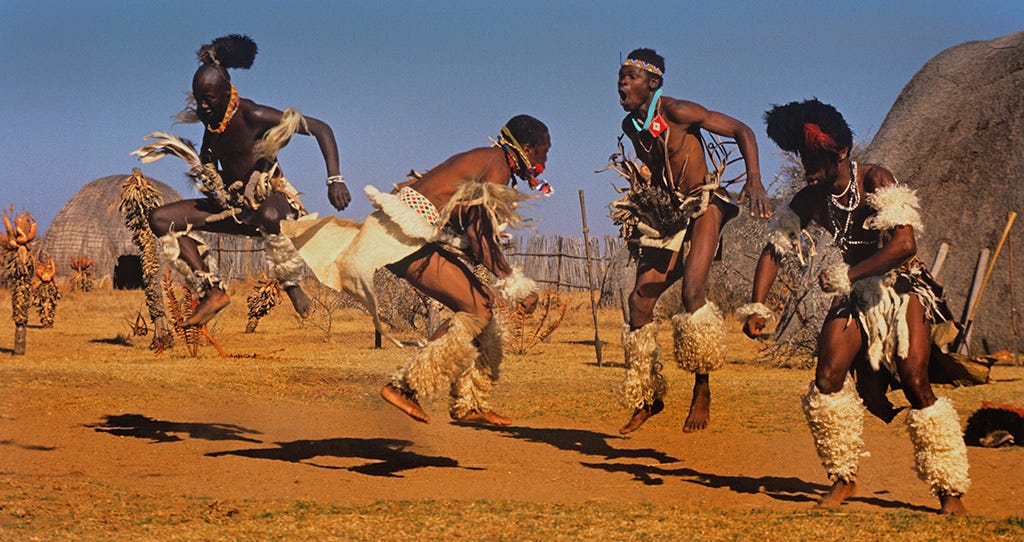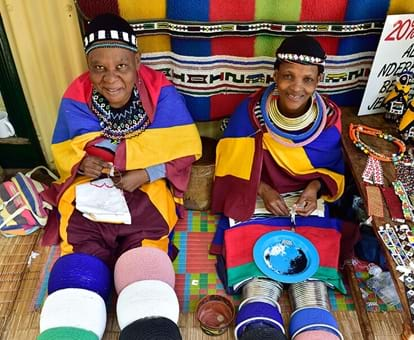What Does South African Culture Today Do?
What Does South African Culture Today Do?
Blog Article
South African Culture Today for Dummies
Table of ContentsAll About South African Culture TodayNot known Details About South African Culture Today South African Culture Today for BeginnersNot known Incorrect Statements About South African Culture Today South African Culture Today Things To Know Before You Get ThisSouth African Culture Today - Questions
This adheres to with vocal singing and drum beating. The groom and bride after that meet with the seniors and discuss the importance of their union. A matter of importance in Zambian villages is the passing away of loved ones. All participants of the town placed cash, effort and time together for the interment of the deceased.During the mourning period; men remain outside your house and the females remain inside the home of the deceased. After speaking about the deceased, the village strolls to the place of interment to claim their last bye-byes. Songs and dance is a very essential aspect of the Zambian society. The numerous tribal devices have their very own dance forms; however, makishi is common amongst all tribes.
10 Easy Facts About South African Culture Today Described
When it pertains to music, drums are utilized one of the most, with a variety of drumming ceremonies. In Zambia, majority of individuals are Christian; Protestant and Roman Catholic. There are little teams of Muslims and Hindus, with the rest complying with local indigenous tribal beliefs.

South African heritage and society is profoundly varied, and contains numerous different groups of people who each have their own customs and ideas. Having such a diversity of individuals and societies is what makes South Africa so unique. In the real feeling of the phrase, we are a rainbow country.
South Africa has approximately 3 hundred thousand Portuguese people residing in it. Making it the 7th on the checklist of nations with one of the most Portuguese individuals in it beyond Portugal. Portuguese is not just a society, yet it is also a language and a race. Portuguese individuals stem from the nation of Portugal in Europe, however, because of Portugal (like lots of other nations in Europe) exploring the world and conquering other countries throughout the 15th 20th centuries, South Africa has what we call Portuguese South African's living in it.
Rumored Buzz on South African Culture Today
Among the popular attributes of the topography is a plateau that covers virtually two thirds of the center of the nation. The plateau complex rises towards the southeast, where it culminates in the Drakensberg variety, component of a cliff that divides the plateau from the seaside areas. The Drakensburg includes Champagne Castle, the highest optimal in the country.
The area north of the Witwatersrand, called the bushveld, inclines downward from east to west toward the Limpopo River, which creates the international border. The western section of the plateau, the middleveld, also descends towards the west and varies in altitude in between the highveld and bushveld. In between the Drakensburg and the eastern and southern coast, the land descends to the sea.
Nearer the shore there is a low-lying plain called the eastern lowveld. Southwest of the plateau the country ends up being progressively much more dry, paving the way to the stony desert of the Great Karroo, bordered on the eastern by the reduced, much better sprinkled plateau of the Little Karroo. Separating the completely dry southerly inside from the sandy littoral of the southerly coast and West Cape is one more array, the Langeberg.
What Does South African Culture Today Do?
The nation's racially, ethnically, and politically split history has actually created national and subnational icons that still work as symbols of the country, and others symbols that are approved just by particular groups. The monoliths to white settler conquest and political dominance, such as the Afrikaner Voortrekker ("pioneer") Monument look at here in Pretoria and the Rhodes Monument honoring the British colonial empire building contractor and Cape site web head of state Cecil Rhodes, stay sectarian symbols.
The initial contemporary citizens were the San ("bushman") hunter-gatherers and the Khoi ("Hottentot") peoples, who herded animals (South African culture today). The San may have been present for thousands of years and left evidence of their visibility in hundreds of ancient cavern paintings ("rock art"). Bantu-speaking clans that were the forefathers of the Nguni (today's amaZulu, amaXhosa, amaSwazi, and vaTsonga peoples) and Tswana-Sotho language groups (today's Batswana and Southern and Northern Basotho) moved down from eastern Africa as early as the fifteenth century

The 2 former republics of the Orange Free State and Transvaal (South African Republic) were established by Afrikaner inhabitants who defeated and dispossessed the Basotho and Batswana. Lesotho would certainly have been by force integrated right into the Orange Free State without the extension of British defense in 1869. The supreme unification of the nation arised from the South African Battle (18991902) between the British and both Afrikaner republics, which lowered the country to mess up at the start of the twentieth century.
Afrikaners traditionally considered themselves the just true South Africans and, while providing complete citizenship to all homeowners of European descent, refuted that condition to people of shade up until the autonomous transition of 1994. British South Africans keep a feeling of cultural and social link to Great over here Britain without damaging their identity as South Africans.
Some Known Factual Statements About South African Culture Today
The diversity and fragmentation within ethnic groups and the equilibrium of tensions between those groups throughout the twentieth century stopped interethnic civil dispute. While intergroup stress over resources, privileges, and political supremacy stay, those conflicts are as most likely to match Zulu versus Zulu as Zulu versus Xhosa or African versus Afrikaner.
From colonial India, British vendors and administrators brought the curved steel decorative roof coverings and slim shoelace work pillars that still epitomize the terraces of homes in the areas and cities throughout the country. Holy places add a vital building element also in the tiniest communities. Along with the soaring steeples and classic stonework of Afrikaans Dutch Reformed churches, Anglican churches, synagogues, mosques, and Hindu temples offer selection to the spiritual architectural scene.

Slaughtering and the developing of standard cereal beer are necessary in securing the involvement and a good reputation of the forefathers that are taken into consideration the guardians of good luck, success, and well-being. Indian communities keep their native cooking customs and use them on Islamic and Hindu routine and ritualistic occasions. Afrikaners and Coloured people collect at weekend breaks and special celebrations at multifamily bbqs called braais, where community bonds are reinforced.
Because this was the primary financial business of both black Africans and white homesteaders, problem between those groups focused on the possession of grazing land and animals. In 1867, the largest ruby down payments on the planet were found at Kimberley in the west main location. The riches from those fields aided fund the exploitation of the biggest gold reef on the planet, which was discovered on the Witwatersrand in 1886.
Rumored Buzz on South African Culture Today
This resulted in misconceptions and intentional misstatement in the negotiations of white settlers and federal government officials with African chiefs during the colonial period (South African culture today). In the facility of African gets, some aspects of public and mainly "tribal count on" land period were protected, and even in white country areas, kinds of common period were still practiced in locations with African communities
After the autonomous makeover of 1994, programs for land restitution, redistribution, and reform were instituted, but progression has been slow. The white minority still controls eighty percent of the land. Following agricultural land invasions in Zimbabwe, the Division of Land Matters has pledged to speed land redistribution.
Report this page